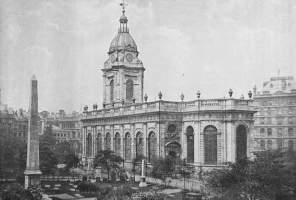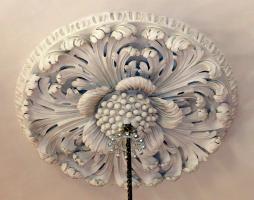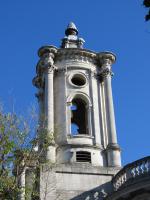Thomas Archer (1668-1743)
St Philip's Cathedral, Birmingham, by Thomas Archer.
The architect Thomas Archer, one of the more significant Baroque architects following after Christopher Wren, is chiefly known for three churches: St Philip’s in Birmingham, and in London St Paul’s Deptford, and the controversial St John’s Smith Square.
Archer's early life is obscure, but he came from a wealthy background, and made a grand tour of the Continent for about four years, returning to England in 1703 - on this trip, he made a careful study of European Baroque architecture, which at that time was unusual for a British architect. His career was regrettably short, as when he obtained the post of Controller of Customs at Newcastle, he effectively stopped seeking new architectural commissions, though his existing buildings occupied him to some extent through till about 1730.
St Philip’s Cathedral (noted on this page), originally a parish church which was upgraded to Cathedral status at the beginning of the 20th Century, was built between 1710 and 1715, and underwent some degree of alteration in later Victorian times under J. A. Chatwin. The exterior is a fine Baroque structure with solid square tower with concave sides surmounted by a dome and a cupola, and the whole was greatly esteemed (albeit as a Parish church rather than as a Cathedral), being described at one time as ‘The only good building in a British city of a million souls’.
Ceiling decoration in St Paul's Deptford.
St Paul Deptford, completed in 1830, is very elegant, with a large semicircular portico, Doric in style, and above, a circular tower and steeple. The whole gives a light, rather airy feel. The large arched windows are similar to those in St Philip's. See this page.
St John’s Smith Square, in Westminster, built in 1721-28, was bombed, the interior burnt out, and now functions as a concert hall. But the exterior survives, an unusual square-based structure with four equal Baroque frontages, and four towers. It aroused remarkable controversy when built, and for long afterwards. Knight in his 1840s account of London called it ‘architecture gone mad.’ Bumpus, who in the 1900s wrote one of the more comprehensive accounts of London churches, quotes Walpole’s opinion of Archer: ‘Cliefden House and a house at Roehampton… [are] specimens of his wretched taste… but the chef d’oeuvre of his absurdity was the church of St John’s with four belfries in Westminster’, but Bumpus himself goes on in some bemusement: ‘If one could imagine a collection of all the ordinary materials of a church of the 18th C, with an extraordinary profusion of decoration, of porticoes and of cylindrical towers surrounded by Corinthian columns, to have suddenly dropt down from the skies, and by some freak of nature, to have fallen into a kind of order and harmony and fantastic grandeur… it would give no very exaggerated idea of St John’s.’ See this page.
One of the towers of St John Smith Square.
Apart from these three churches, Archer designed the North front of Chatsworth, Derbyshire (1704), and a rather grand mansion in S.E. London called Roehampton House (from 1710), now owned by Greenwich University, but most of his other works, including some houses by him in London, do not survive today. Apparently he designed a monument in St Mary Parish Church, Hampton, Twickenham, to Susannah Thomas (d.1731), which was perhaps the very last work he designed, but I have not seen this.


